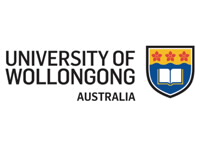 |
Understanding climate variability and the role of nuclear technology and power in helping to address this global problem were key points made by ANSTO Chief Executive, Dr Ian Smith to graduating students at the University of Wollongong today.
Dr Smith used the current climate change issue to illustrate that the young engineering, informatics and business graduates he addressed would have many challenges to face in their careers, needing varied solutions.
“Climate variability is a result of the growing release of carbon dioxide into the atmosphere and there are clear science and technology responses to this problem some of which ANSTO has in place,” he said. “Nuclear science and technology offers some amazing tools for understanding past and present climate.
“ANSTO can date water coming from bores in the Great Artesian Basin and show that it last fell as rain 300,000 years ago and we can examine precipitation in the Amazon Basin to show what proportion of rain water had originally evaporated from the ground, and what proportion evaporated by transpiration through leaves.
“Examining ice cores from Antarctica can also tell us what climate was doing several hundreds of thousands of years ago,” said Dr Smith.
Dr Smith pointed out that although this knowledge is exciting and adds tremendous value to understanding past climate change and predicting future movements, what immediate impact can it have in solving the problem?
“My analysis of the root cause of climate change is broader. We have an expanding population to nearly 9 billion with two billion in the developed world consuming 80 per cent of the energy and a growing proportion in the developing world seeking to consume more energy.
“How can developed countries which currently consume more than 70000 kWh or electricity per person ask developing countries which consume 70 kWh per person show restraint?”
The fact that the world is heading for emissions of 40 billion tons of carbon dioxide per year by 2030 was underlined by Dr Smith.
“Best estimates indicate that by 2050 we need to avoid the release of 20 billion tons of carbon dioxide to halt the increase in atmospheric carbon dioxide. It is nuclear power, a technology under the most severe scrutiny, which can immediately help reduce these emissions.
“If it was proposed today to develop a power generation method producing 8.8 million tons of carbon dioxide and 3.3 million cubic metres of solid waste containing heavy metals, arsenic, uranium and thorium, it would be severely scrutinised. Yet this is it the waste stream from a single existing large coal fired power station in NSW.
“A highly criticised nuclear power plant on the other hand would produce only 16 cubic metres of spent fuel which would result in 0.9 cubic metres of high level waste, 75 cubic metres of intermediate level waste, 222 cubic metres of low level waste and only 35,000 tons of carbon dioxide.
“France, which has produced 80 per cent of its electricity from nuclear stations for domestic and export for the past 25 years, is yet to fill one Olympic swimming pool with high level waste. So which method of base load power generation would you choose?” asked Dr Smith.
However, Dr Smith pointed out to the graduates that nuclear power was not the solution and a combination of a large number of approaches was needed to solve the problem.
“To save just 12.5 per cent of the 20 billion tons of carbon dioxide release needed the world would need to build 700 1GW nuclear power stations, install 2 million 1 GW wind farms, 2 million hectares of solar panels and develop or licence and install carbon capture and storage for 800 GW of coalfired power stations.
“This illustrates the magnitude and breadth of the problem for which the public is offered only simplified solutions which are peripheral to the ultimate solution or are, at best, only part of that solution.
“Your challenge will be to contribute to the overarching solutions to such major problems while recognising the challenges of society, interest groups and the short political cycle,” concluded Dr Smith.
Published: 19/07/2007

